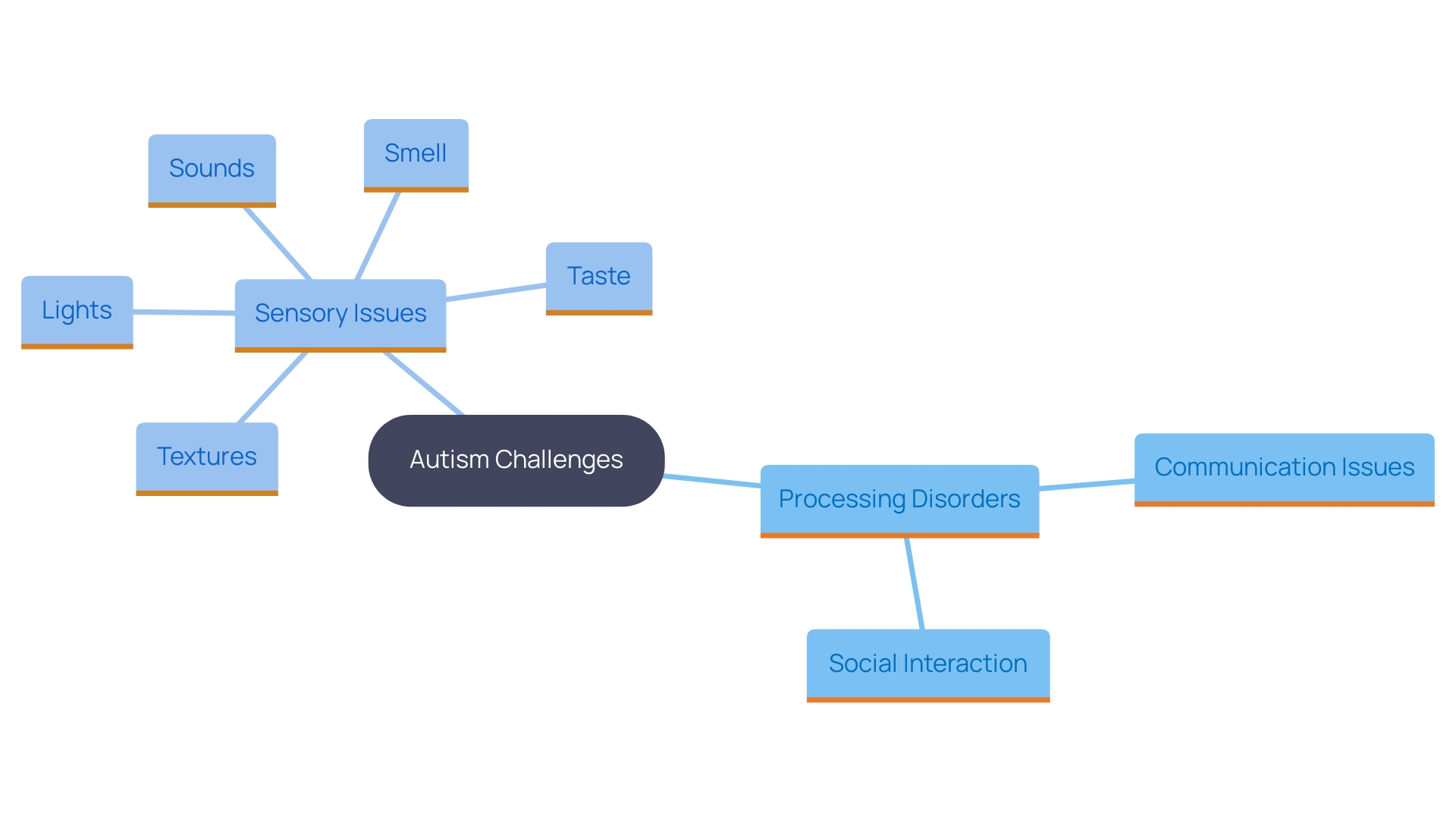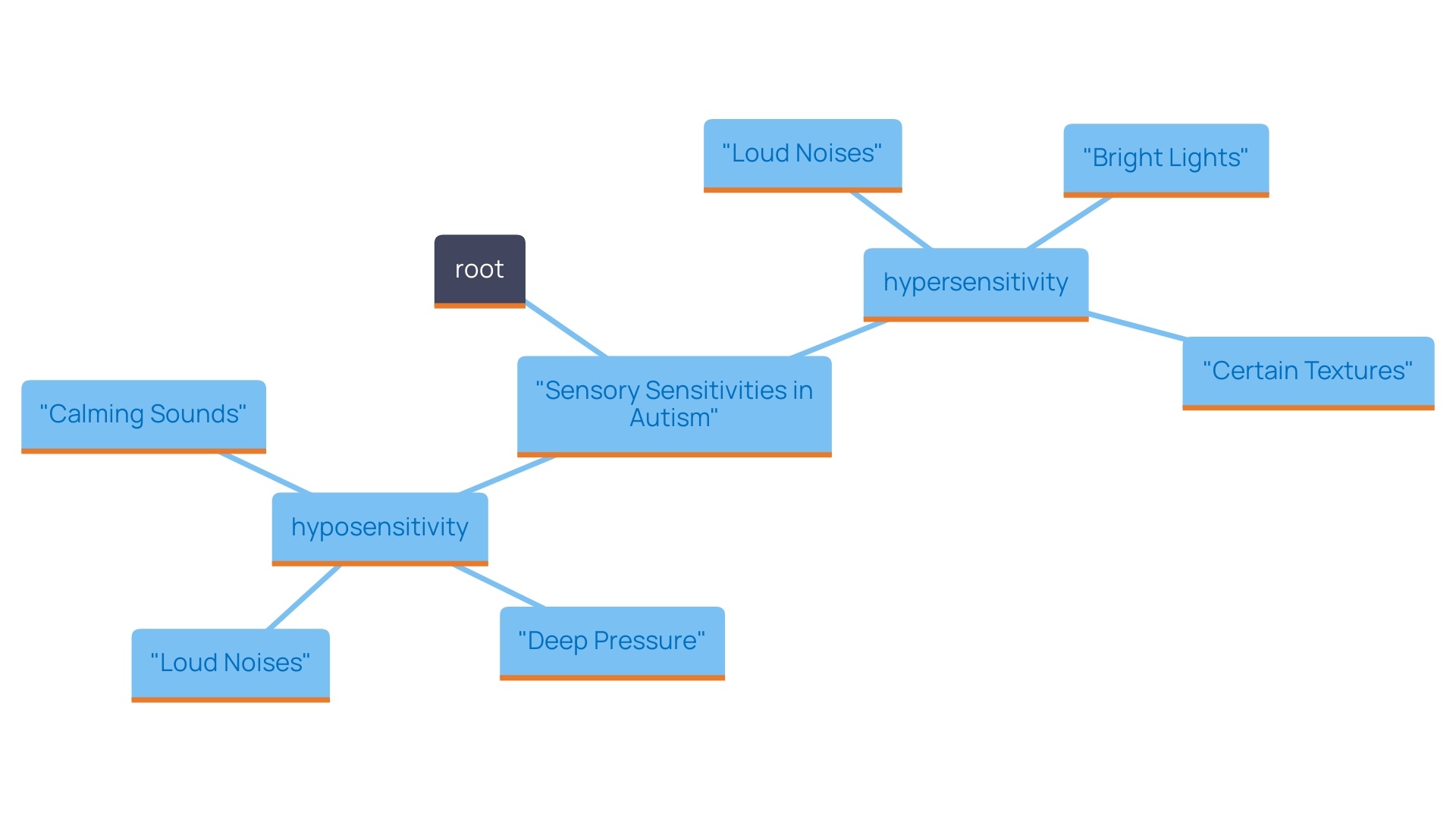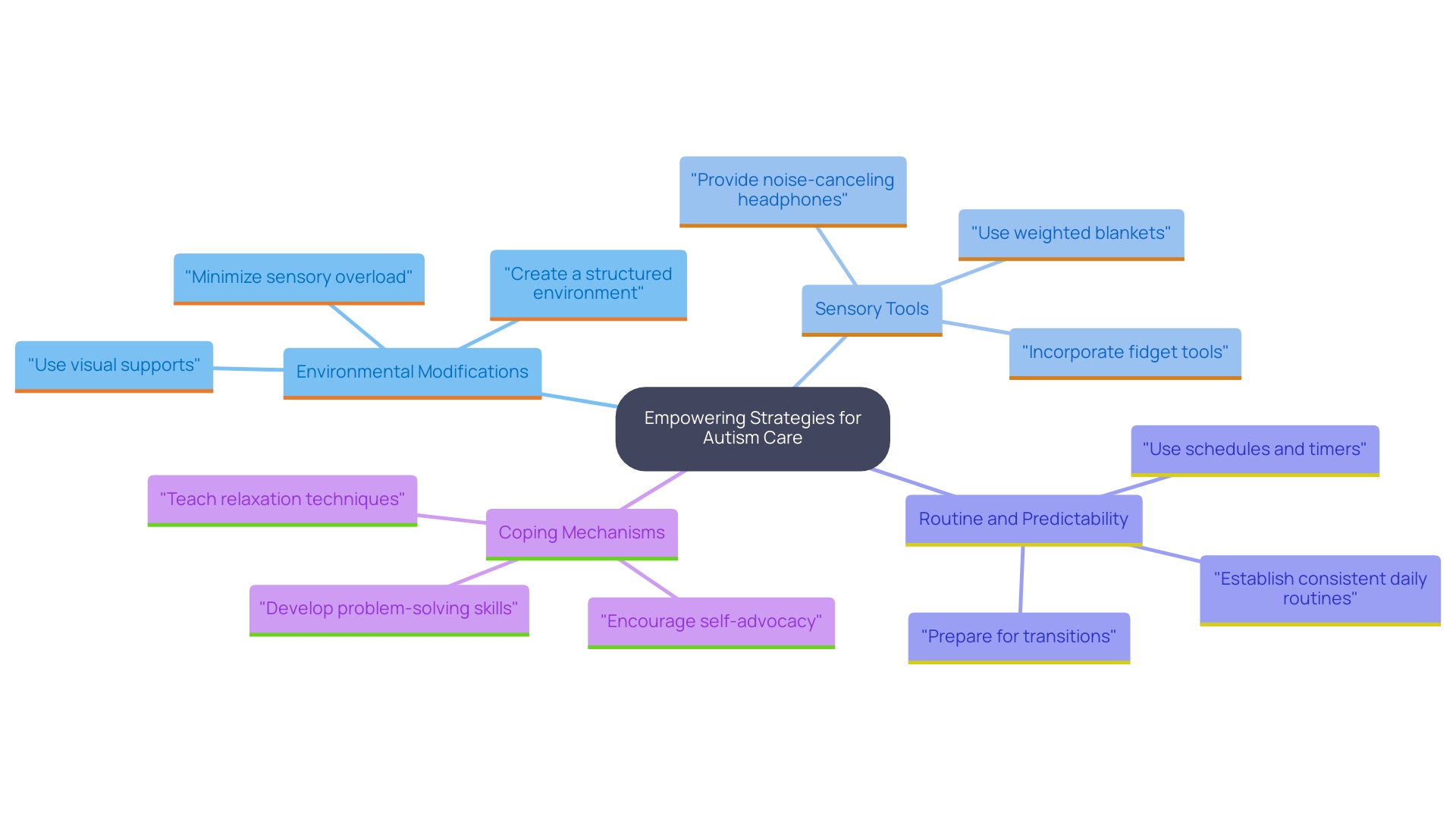Introduction
Navigating the sensory landscape can be a complex journey for individuals with autism, as they often experience unique challenges in processing sensory information. From overwhelming sounds to uncomfortable textures, these sensory issues can significantly impact daily life and well-being. For caregivers, understanding the nuances of hypersensitivity and hyposensitivity is essential in fostering an environment where individuals feel secure and empowered.
By implementing tailored strategies and utilizing sensory tools, caregivers can create a supportive atmosphere that not only addresses sensory needs but also enhances the overall quality of life for those they care for. This exploration into sensory challenges offers valuable insights and practical solutions to help individuals thrive amidst a world filled with sensory stimuli.
Foundations of Sensory Issues in Autism
Challenges related to autism refer to the difficulties certain people face in processing information from their environment. These challenges can be classified into:
- Processing disorders, where the brain has difficulty receiving and responding to input.
- Sensory issues, which can manifest in various ways, such as:
- An aversion to certain sounds
- An aversion to certain textures
- An aversion to certain lights
These sensory issues can lead to discomfort or anxiety. Grasping these matters is essential for caregivers, as it allows them to better assist the needs of the people they look after, creating a setting where the person feels secure and comprehended.


Foundations of Sensory Issues in Autism
Challenges related to autism refer to the difficulties certain people face in processing information from their environment. These challenges can be classified into:
- Processing disorders, where the brain has difficulty receiving and responding to input.
- Sensory issues, which can manifest in various ways, such as:
- An aversion to certain sounds
- An aversion to certain textures
- An aversion to certain lights
These sensory issues can lead to discomfort or anxiety. Grasping these matters is essential for caregivers, as it allows them to better assist the needs of the people they look after, creating a setting where the person feels secure and comprehended.


Exploring Sensory Sensitivities: Hypersensitivity and Hyposensitivity
Individuals with autism may experience hypersensitivity (over-responsiveness) or hyposensitivity (under-responsiveness) to stimuli. Hypersensitivity might manifest as extreme reactions to:
- Loud noises
- Bright lights
- Certain textures
This can cause stress or avoidance behaviors. On the other hand, hyposensitivity may cause people to pursue experiences more energetically, such as appreciating:
- Deep pressure
- Loud noises
By acknowledging these sensitivities, caregivers can better comprehend the actions of the people they assist and implement strategies that address their needs, ultimately improving their quality of life.


Exploring Sensory Sensitivities: Hypersensitivity and Hyposensitivity
Individuals with autism may experience hypersensitivity (over-responsiveness) or hyposensitivity (under-responsiveness) to stimuli. Hypersensitivity might manifest as extreme reactions to:
- Loud noises
- Bright lights
- Certain textures
This can cause stress or avoidance behaviors. On the other hand, hyposensitivity may cause people to pursue experiences more energetically, such as appreciating:
- Deep pressure
- Loud noises
By acknowledging these sensitivities, caregivers can better comprehend the actions of the people they assist and implement strategies that address their needs, ultimately improving their quality of life.


Effective Strategies for Managing Sensory Challenges
To effectively handle challenges related to perception, caregivers can adopt a range of empowering strategies that promote understanding and support for people with autism. Here are some key approaches:
-
Environmental Modifications: Adjusting the perceptual environment can significantly diminish overstimulation. This may involve using noise-canceling headphones to block out disruptive sounds, dimming lights to create a calming atmosphere, or designating quiet spaces where people can retreat when feeling overwhelmed. Such modifications play a crucial role in promoting a sense of safety and comfort.
-
Sensory Tools: The introduction of sensory devices—such as fidget toys, weighted blankets, or textured materials—can aid persons in self-regulating their input. Statistics indicate that 75% of parents report enhanced self-regulation in their children after using tactile tools. These tools not only offer comfort but also enable people to handle their experiences more effectively, enhancing their overall well-being.
-
Routine and Predictability: Creating a regular daily schedule that incorporates activities related to the senses enables people to foresee and comprehend their experiences. This predictability can foster a sense of security, making transitions smoother and reducing anxiety.
-
Coping Mechanisms: Instructing on coping strategies, such as deep breathing exercises or mindfulness techniques, can provide people with the skills to manage overwhelming experiences. Recent developments in mindfulness applications created for children with developmental challenges have shown promising results in enhancing self-regulation and resilience.
By employing these strategies, caregivers establish a supportive atmosphere that addresses the perceptual needs of individuals on the spectrum, ultimately enabling them to flourish. Prominent champions for autism awareness, including Temple Grandin and Kerry Magro, highlight the significance of customized assistance, reinforcing the message that autism is not an obstacle but a detour to a different destination, filled with unique opportunities. As Debra Muzikar stated, 'Autism is not a roadblock but a detour to a different destination, filled with unique opportunities.' This perspective encourages a focus on strengths and possibilities, highlighting the positive impact of customized sensory support.

Conclusion
Navigating the sensory challenges faced by individuals with autism is a critical aspect of fostering a supportive environment. Understanding the foundations of sensory issues, including hypersensitivity and hyposensitivity, equips caregivers with the knowledge needed to effectively address these unique needs. By recognizing the signs and manifestations of sensory processing disorders, caregivers can create spaces that prioritize comfort and security, ensuring that individuals feel understood and valued.
Implementing tailored strategies such as environmental modifications, sensory tools, and predictable routines can significantly enhance the quality of life for those affected by sensory sensitivities. These approaches not only mitigate discomfort but also empower individuals to manage their sensory experiences, promoting self-regulation and resilience. The insights from advocates in the autism community reinforce the idea that with the right support, autism can be seen as a pathway filled with opportunities rather than obstacles.
In conclusion, the journey through the sensory landscape is complex, but with informed strategies and compassionate care, individuals with autism can thrive. By prioritizing sensory needs and fostering an understanding atmosphere, caregivers play a pivotal role in enhancing the well-being and independence of those they support. Now is the time to embrace these strategies and cultivate a world where everyone can flourish, regardless of their sensory processing challenges.




